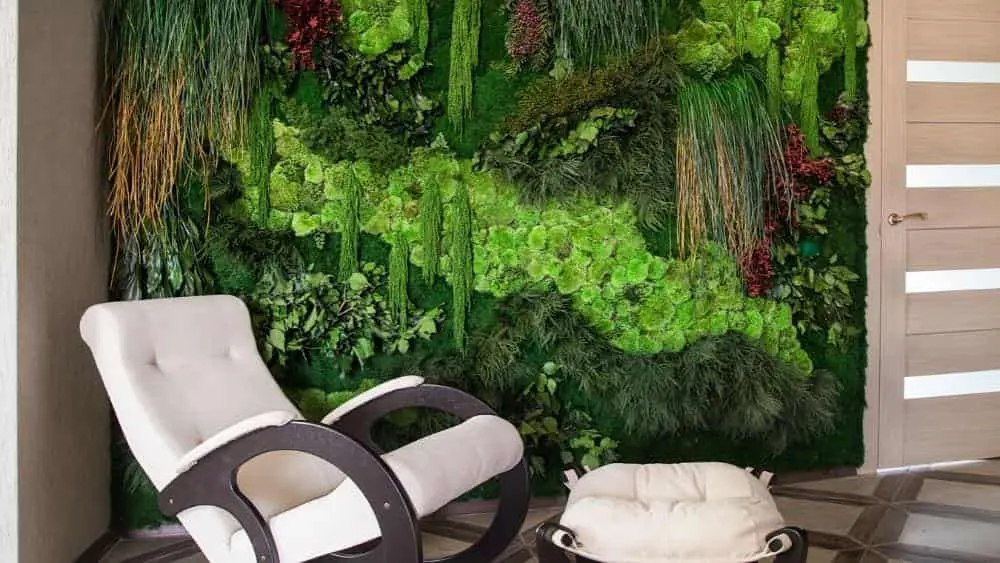
The trend toward vertical gardens in residential homes give new meaning to the phrase “green space.”
You’ve heard of statement walls, the term used by designers when suggesting a funky wallpaper pattern or bold or colorful shade of paint.
But if you really want to turn heads, including your own, try a vertical garden, also known as a living wall.
Innovative landscape architects have loved the idea of vertical hanging systems made to support living plants ever since French botanist Patrick Blanc popularized the concept 25 years ago. For a long time the upright green fields were found mostly in commercial and institutional spaces whose owners wanted to shout out their commitment to the environment. If you’ve ever seen a vertical garden, you know how impressive they can be and just how much drama they can add to a space.
Today we’re finally seeing vertical gardens in residential homes thanks to new products that make them more accessible, says Jason Rokosh, owner of Vertical Landscape Architects in Toronto. The trend is literally taking the popular adage “bring the outside in” to new heights.
Special systems, sometimes made from recycled products like aluminum panels, are hung on walls, allowing plants to grow in individual pods with irrigation lines running discreetly in between them.
Despite their increasing popularity, vertical gardens don’t come cheap — they start at about $50 per square foot, including the system itself, plants, irrigation and lighting (if needed), according to Rokosh. However, that figure is quickly dropping as both demand and innovation skyrocket. The harder the space is to get to, the more expensive, but if you’d simply like to turn a five-by-six-foot section of a living room wall into an eye-catching statement piece, it’ll probably cost about the same as buying a new refrigerator.
If the sound of this piques your curiosity, the No. 1 thing to consider is where you will put a vertical garden. Like any landscape, vertical gardens need light and if you’re thinking of placing it indoors instead of on a patio or pool deck, you’ll need indirect light near a bank of windows or a skylight, recommends Rokosh. Some of that can be achieved artificially, though that will add to the cost, of course.
Which brings us to the reason why you might want to have a pro set up your vertical garden and handle the maintenance for you: Vertical gardens require lots of attention. “Anybody who goes into it thinking there will no replanting or the system will take care of itself probably shouldn’t consider it,” warns Rokosh.
If you think about it, water flows down, not sideways, and most gardens are designed to flow horizontally. There are automated irrigation systems with timers built in, but like any landscape, dead material is par for the course, as is finding just the right balance between water, light and even pests. The fact that the garden hangs inside your home in areas where you relax, eat and entertain means these things can’t be ignored for long.
If you’re a total green thumb and nothing thrills you more than a garden challenge, then by all means, try it on your own. You might want to start with small, simple systems, like those from Williams-Sonoma, to ensure you’re ready for the challenge of maintaining something larger and more sophisticated. Think of it as a trial run. Pick a spot that is easy to get to and offers lots of light, which might not be indoors at all but rather on the patio or near a pool deck.
“Just remember there are health benefits to vertical gardens, so choose an area where you spend a lot of time,” Rokosh says. Depending on the plants you choose, vertical gardens help to purify the air and provide additional humidity and oxygen.
If money is an issue, a focal point will provide the biggest bang for your buck. Just make sure you select a strong, sturdy wall that can support these living systems. Tropical plants that require low light generally do well, especially evergreen varieties that can be enjoyed year-round.
“People don’t realize the technology exists and that hanging plants vertically is even possible,” Rokosh says. But once people see the extraordinary qualities of vertical gardens and the benefits they can provide, they’re hooked.

Ana Connery is former content director of Parenting, Babytalk, Pregnancy Planner and Conceive magazines as well as parenting.com.
While editor in chief of Florida Travel & Life magazine from 2006-2009, she covered the state’s real estate and home design market as well as travel destinations.
She’s held senior editorial positions at some of the country’s most celebrated magazines, including Latina, Fitness and Cooking Light, where she oversaw the brand’s “FitHouse” show home.
Ana’s expertise is frequently sought after for appearances on “The Today Show,” “Good Morning America” and CNN. She has interviewed the country’s top experts in a variety of fields, including U.S. Secretary of Education Arne Duncan and First Lady Michelle Obama.
 How Long Does it Take to Build a Custom Home?
How Long Does it Take to Build a Custom Home?